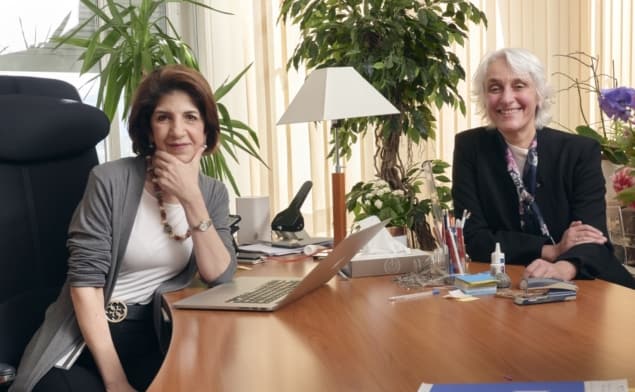
The Italian particle physicist Fabiola Gianotti is to continue as head of the CERN particle-physics lab near Geneva until 2025. The move marks the first time in CERN’s history that a director general has been appointed for a full second term. The announcement was made at the end of the 195th session of the CERN council on 6 November with Gianotti beginning her second term on 1 January 2021.
Gianotti has been at CERN since 1994 and from 2009 to 2013 was leader of the ATLAS detector. On 1 January 2016 she became the first woman to lead the lab taking over from the German physicist Rolf-Dieter Heuer. “During [Gianotti’s] first term, she excelled in leading our diverse and international scientific organisation, becoming a role model, especially for women in science”, says Ursula Bassler, president of the CERN Council. “I’m delighted to see Fabiola Gianotti re-appointed for a second term of office. With her at the helm, CERN will continue to benefit from her strong leadership and experience.” Preparing for a post-LHC future
The move now means that Gianotti will oversee the completion of the high-luminosity upgrade to the lab’s Large Hadron Collider (LHC), which is set to come online in 2026. This will see the collider’s luminosity boosted by a factor of 10 over the existing machine. “I am deeply grateful to the CERN council for their renewed trust. It is a great privilege and a huge responsibility,” says Gianotti. “The following years will be crucial for laying the foundations of CERN’s future projects.”
Indeed, in May 2020 European particle physicists are set to publish an update to their future strategy, in which it is hoped that a clear direction will be made for which collider could succeed the LHC. Lyn Evans, who masterminded the LHC’s construction, told Physics World that Gianotti has been “very good” at managing the lab as director general, adding that one of her main roles will now be “laying the foundation for the long-term future of CERN with input from the European strategy group”.
Analysis: Gianotti will lead CERN at an important crossroad for the lab
Many physicists have welcomed the announcement that the Italian particle physicist Fabiola Gianotti will complete a second term as head of the CERN particle-physics lab. “Congratulations to Fabiola Gianotti on a historic second term as [head] of CERN,” tweeted Nigel Lockyer, director of Fermilab in the US.
The decision to stick with Gianotti for another five years makes sense. The Large Hadron Collider (LHC) is currently shut down until January 2021 and then it will continue at 13 TeV for three years. From 2024 to 2026, it will be turned off again as the components for the high-luminosity upgrade (HL-LHC) are installed. This means that even the upgraded machine will not come online by the time that Gianotti has finished her second term. Continuity at the top of the lab will be vital.
However, Gianotti will certainly have her work cut out making sure the upgrade goes smoothly – after all there are sometimes more problems to solve during a shutdown than when it is operating routinely. But perhaps Gianotti’s biggest challenge will be planning for the lab’s future beyond the HL-LHC.
For the past decade, CERN has been at the forefront of the so-called “energy frontier”, but there is a real prospect that Asia will now take that crown in the form of the International Linear Collider (ILC), currently being pursued by Japan, as well as the China Electron Positron Collider – a huge 100 km circular machine that is being designed by Chinese physicists.
CERN has their own plans to build the Compact Linear Collider that would operate at higher energies than the ILC, but its design is not as mature. In an interview with Physics World earlier this year, Gianotti indicated that if Japan went ahead with the ILC then CERN would pursue a 100 km circumference proton-proton collider “complementary to the ILC”. But given the huge costs of construction — around £5bn for the tunnel alone — would it ever see the light of day?
Over a decade ago, Fermilab in the US, which operated the 1 TeV Tevatron collider, faced a similar issue when the energy shifted to Europe and the LHC. It opted to move away from smashing protons together and used them produce neutrinos instead (dubbed the “intensity frontier”). The lab is now currently building what will be the world’s most powerful accelerator-based neutrino experiment – the Deep Underground Neutrino Experiment.
If the energy frontier moves to Asia in the mid-2030s, then CERN may need to follow Fermilab’s example and look at new avenues of research or, perhaps, develop new collider technologies.



